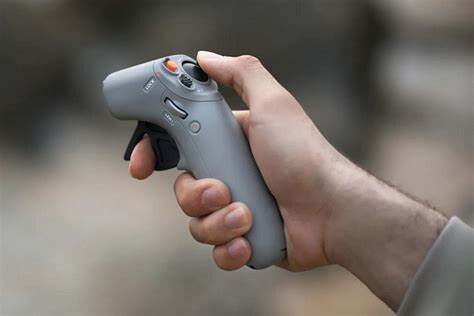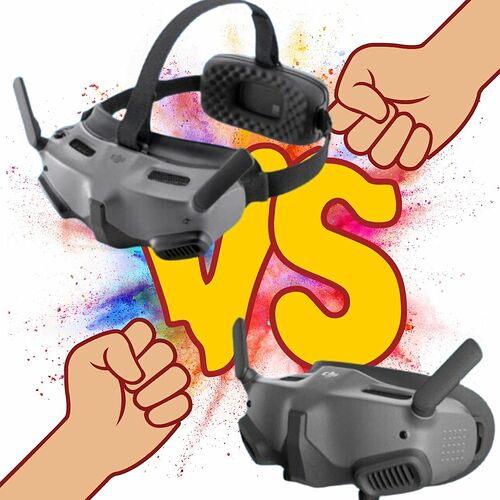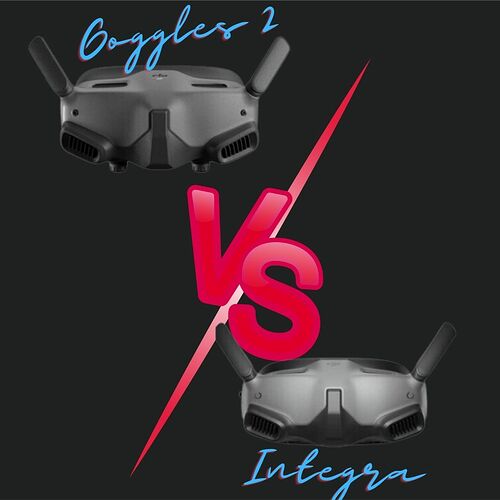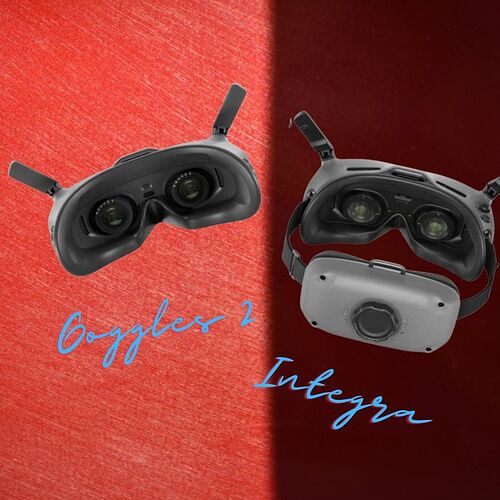If you’re an FPV enthusiast, choosing the right goggles can make a big difference in your flying experience. Two popular options are the DJI Goggles Integra and the DJI Goggles 2. Both models offer immersive flying experiences with high-quality video transmission, but they also have some differences that you’ll need to consider before making your choice.
In this article, we’ll take a closer look at the features of these two DJI goggles to help you decide which one is right for you. We’ll cover differences in design, optics and features, video transmission, compatibility and controllers, pricing, and frequently asked questions.
Specifications
When deciding between the DJI Goggles Integra and the DJI Goggles 2, it’s essential to look at their specs to determine which one is the best fit for your needs. In this section, we’ll compare the specs of these two models side by side, looking at their weight, screen size, resolution, refresh rate, interpupillary distance range, diopter adjustment range, field of view (FOV), storage, battery life, and price. By the end of this section, you’ll have a better understanding of the differences between these two DJI goggles and which one may be the right fit for you.
| Specs | DJI Goggles Integra | DJI Goggles 2 |
|---|---|---|
| Weight | 420 grams | 290 grams |
| Screen Size (single screen) | 0.49-inch | 0.49-inch |
| Resolution (per eye) | 1920×1080 | 1920×1080 |
| Refresh Rate | 100 Hz | 100 Hz |
| Interpupillary Distance Range | 56-72 mm | 56-72 mm |
| Diopter Adjustment Range | N/A | -8.0 D to +2.0 D |
| Field of view (FOV) | 44° | 51° |
| Storage | microSD up to 512 GB | MicroSD up to 256GB |
| Battery | up to 120 minutes | up to 120 minutes |
| Price | $499 | $649 |
Design
The DJI Goggles Integra has an integrated design that combines the headband and battery, resulting in a weight of approximately 410 grams (battery included) and a comfortable wearing experience. In contrast, the Goggles 2 without a battery weighs around 290 grams, but adding a battery with a third-party headband or battery case brings its weight to approximately 415 grams.
Optics and Features
Both goggles have the same screen size (Micro OLED), resolution (1080p), refresh rate, and IPD range. However, the Goggles Integra has a field of view (FOV) of 44° on a single screen, while the Goggles 2 has a diopter adjustment range of -8.0 D to +2.0 D and a FOV of 51° on a single screen.
The DJI Goggles Integra boasts a convenient built-in GPS feature that enables you to fly your drone without the need to connect to a smartphone for remote ID activation. This advanced feature not only saves you time but also provides you with added convenience and flexibility in your flying experience.
Video Transmission
The Goggles 2 and the Integra are compatible with DJI O3/O3+ video transmission using 2.4 GHz and 5.8 GHz frequencies. This technology is known for its superior capabilities in providing precise control, low latency, and clear video footage, making it ideal for freestyle flying or racing. With a maximum video bitrate of 50 Mbps and a transmission latency as low as 30 ms for 1080p/100fps, DJI O3+ transmission is the most powerful and reliable technology available.
Compatibility & Controllers
DJI Goggles Integra and Goggles 2 are compatible with the DJI Avata, DJI O3 Air Unit, DJI Digital FPV System, and the DJI Motion Controller, DJI RC Motion 2, and DJI FPV Remote Controller 2.

Pricing
The DJI Goggles Integra is priced at $499.00, while the Goggles 2 is priced at a higher $649.00. It’s worth noting that both options can also be purchased as part of a combo package, which includes the DJI Avata drone and a motion controller 2. These goggles can be purchased through online retailers like Amazon and UnmannedTech
Frequently Asked Questions:
1. Is charging the DJI Goggles Integra possible using external power sources other than the original charger?
Yes, the DJI Goggles Integra is equipped with a rechargeable battery and can be charged using a power bank connected via the USB-C port. Additionally, the goggles can be used while charging, making it convenient for users who need to use them for extended periods.
2. Can motion control and head tracking be used with DJI Goggles Integra?
DJI Goggles Integra has support for motion control and head tracking, but to utilize these features, a DJI RC Motion 2 or DJI Motion Controller is required.
3. Should I switch to Goggles Integra or Goggles 2 from my current Goggles V2?
The choice between switching to Goggles Integra or Goggles 2 depends on your preferences. In my case, I would stick with my Goggles V2 since it can still effectively carry out most tasks and is also compatible with the O3 air unit and can be used for analog flight and using an adapter and module. However, if you prefer a lighter option without cables, the Integra may be a better choice. Ultimately, it comes down to your specific needs and preferences.
4. What is the difference between DJI O3 and O3+ video transmission?
DJI O3+ is the improved version of DJI O3 that is integrated into some DJI drones, offering higher video bitrate, lower latency, and improved image quality. At the moment it is not solder on its own for DIY FPV drones. It’s the most powerful and reliable transmission technology available in the market.
In conclusion, both DJI Goggles Integra and Goggles 2 are excellent options for drone pilots looking for an immersive and high-quality FPV experience. The Goggles Integra is a more portable and user-friendly option without cables, while the Goggles 2 offers a wider field of view, diopter adjustment, and a built-in touchpad. The choice between the two depends on individual preferences, requirements, and budget.
As a drone pilot, investing in quality goggles can significantly enhance your flying experience. So, before making your choice, carefully consider the features and differences between these two DJI goggles to ensure that you make an informed decision.


